This post may contain affiliate links. As an Amazon Influencer, I earn from qualifying purchases.
This Bavette Steak Recipe yields tender, flavorful steak and takes minutes to pan-sear on the stovetop. Easy method with impressive results.
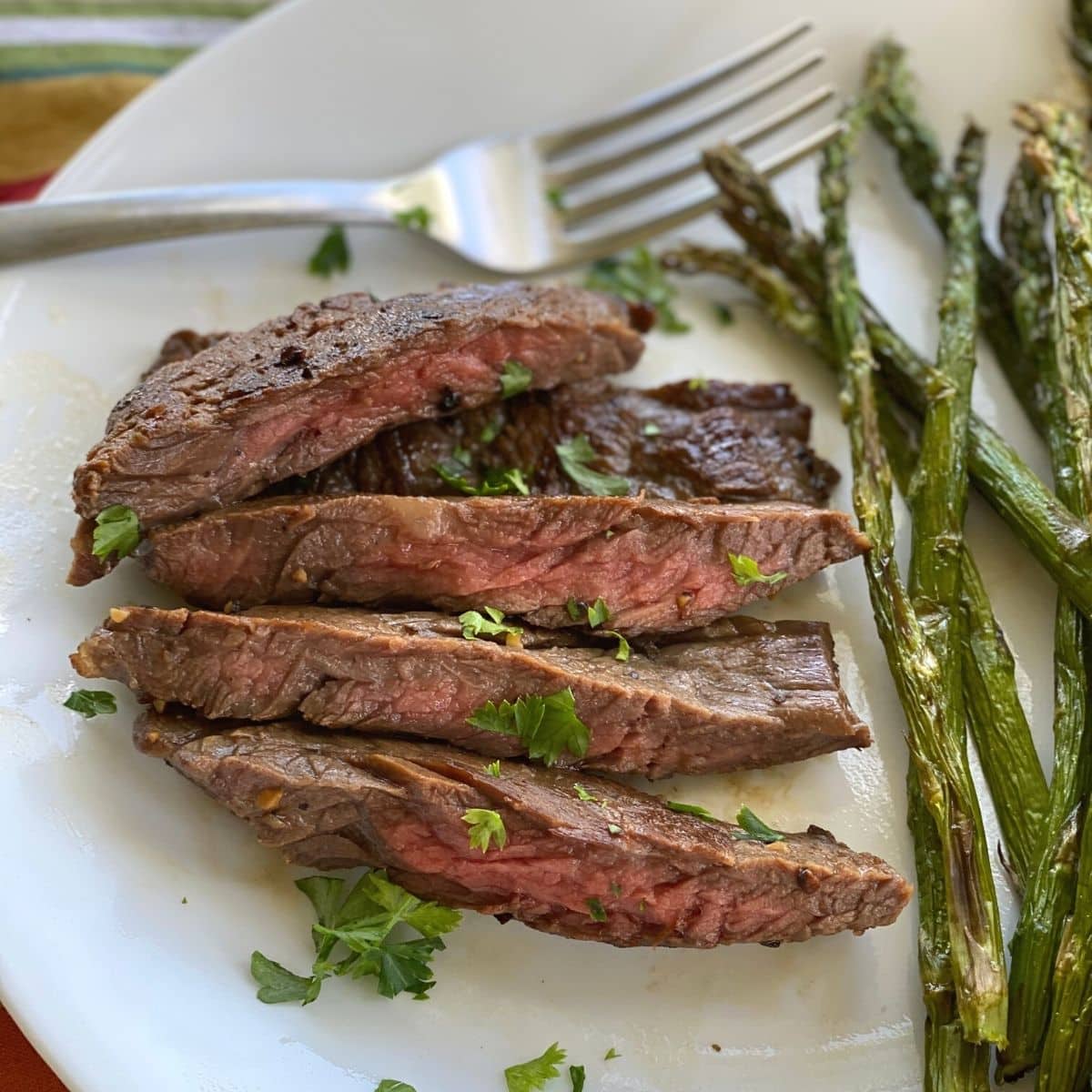
Follow a few simple tips when pan-frying steak bavette (or flap steak) to achieve the perfect crust and a juicy center that rivals a meal from a fancy restaurant.
You may not often hear about this cut of meat, but you'll definitely remember the rich, beefy taste when you try it! Much like a Wagyu burger, the result is unforgettable.
It's often mistaken for flank steak, and this simple recipe and 3-ingredient marinade will also work for that cut of meat! (More on the differences below.)
Although this cut is perfect for air-fried steak fajitas or sesame beef stir fry, I think the best way to enjoy it is next to your favorite veggies and drizzled with easy blue cheese sauce. And that's exactly how we enjoy it at our house when we need a quick and easy meal.
Jump to:
What is Bavette Steak?
"Bavette" is the French word for "bib" because of its fan-shaped appearance. Call it bavette d'aloyau (bib of the sirloin or sirloin bavette) when you're ready to impress someone. It's also called flap steak or flap meat, which doesn't sound nearly as delicious!
It's prized for its rich flavor and tender meat. The picture below shows the fine marbling and loose texture, which allows marinade and spices to quickly absorb into the meat. It's often confused with flank steak since it's adjacent to this section of a steer. But, it comes from the sirloin primal area, as noted in this graphic by The Beef Checkoff.
You may have to special order this beef cut at a local grocery store. My local butcher shop offers to cut a thicker steak in half, which is ideal for cooking it quickly on the stovetop.
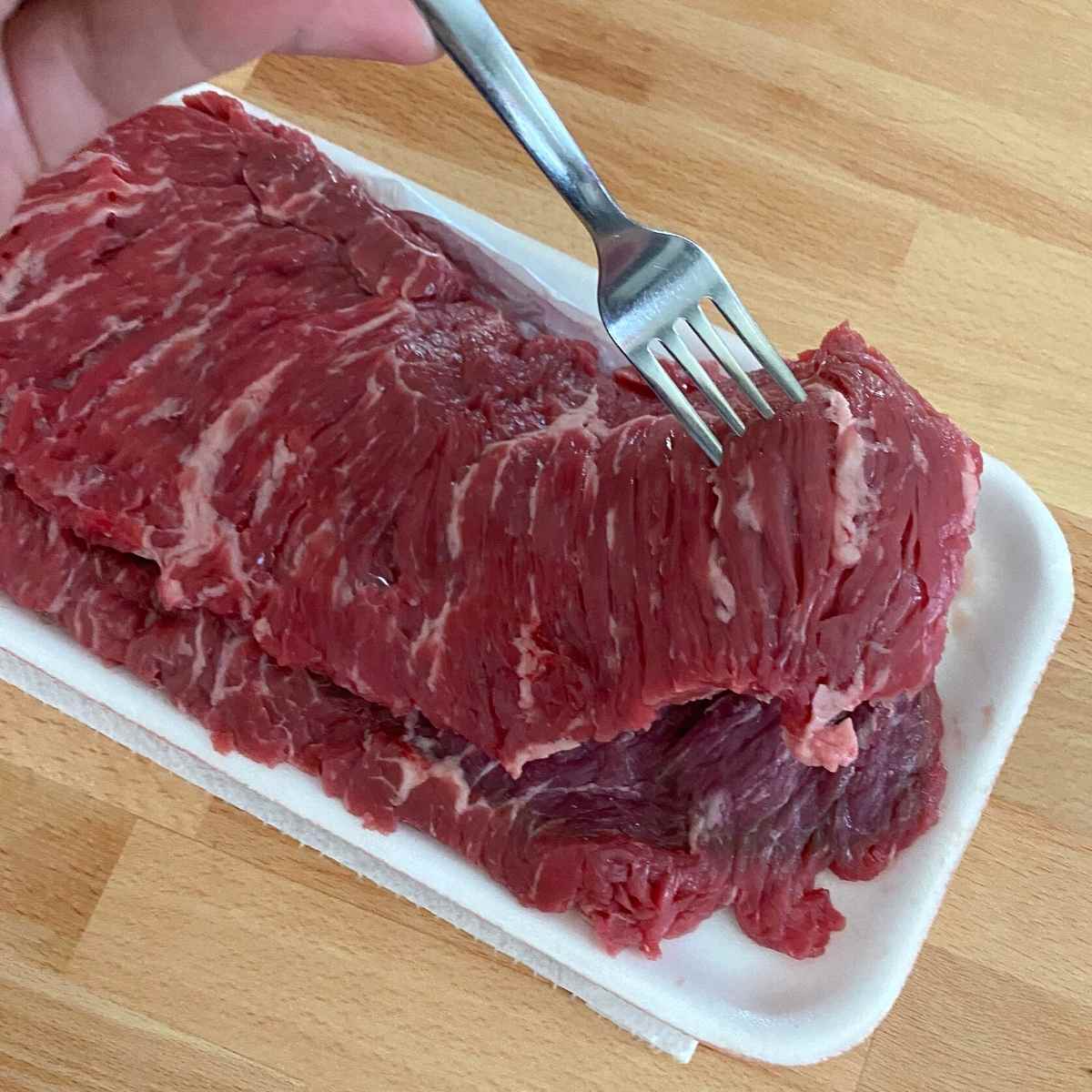
Marinade vs. Rub
Marinate a bavette cut of meat or lightly brush with olive oil and generously salt if you decide not to marinate. Either option will result in a delicious steak.
Note: Since the meat will cook at a very high temperature, spices may burn before they have a chance to flavor the meat. Infuse flavor through the marinating process or after the cooking is done.
This quick marinade seeps into flap steak meat within 30 minutes. It's perfect for up to 2 pounds of protein:
- ½ cup olive oil
- ¼ cup soy sauce (low sodium) or coconut aminos for a soy-free version
- 2-3 teaspoons Montreal Steak Seasoning or another dry rub (depending upon the amount of salt in the blend)
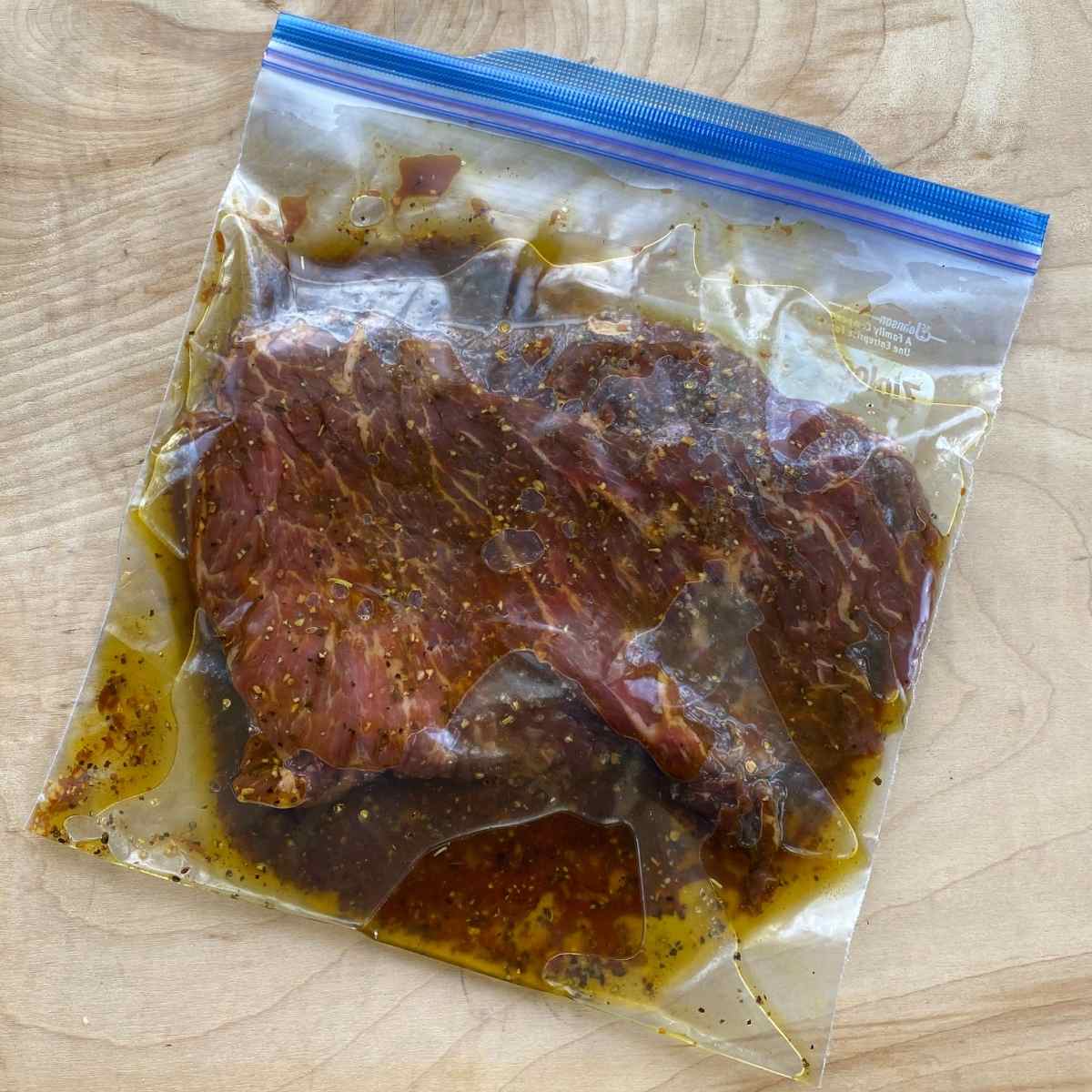
How to Pan Fry Bavette Steak
Pan frying is an excellent way to cook shallow cuts of beef, like sirloin flap steak, skirt steak, and flank meat. The meat is cooked quickly over high, dry heat for a medium-rare steak using this preparation.
We'll walk through the steps below and explain why specific tips are helpful. (See numbered pictures for each step below.)
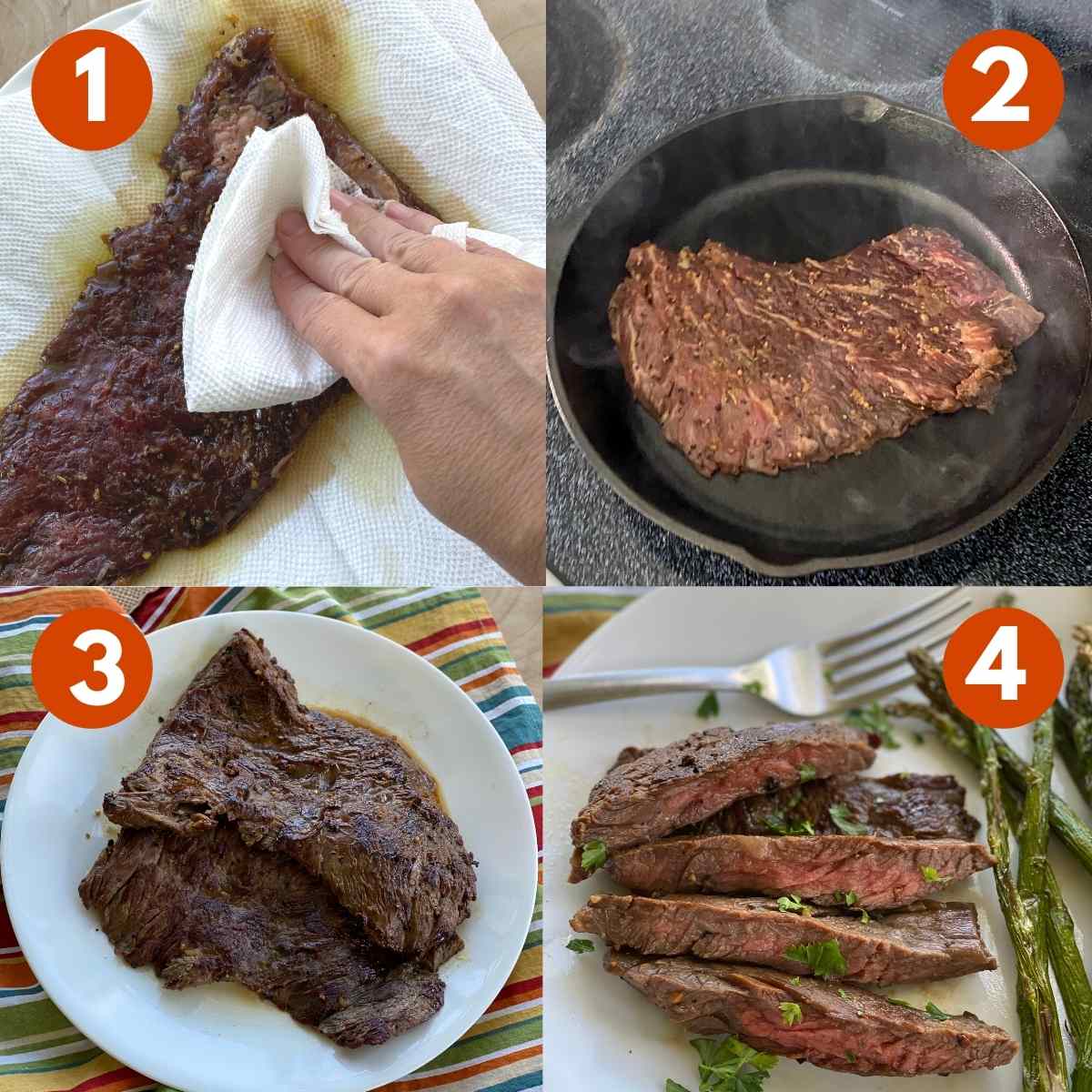
- Remove beef from the marinade and discard any excess liquid. Gently pat dry and brush off the visible seasoning.
- Allow about 20 minutes to bring beef to room temperature, if possible. The meat will spend less time in the pan because the refrigerator chill is gone. It also promotes an evenly cooked result.
- Note: If not using a marinade, then pat the meat dry, lightly brush with olive oil, and season with salt just before cooking.
- Heat a cast iron pan over high. (See notes on the type of pans below.) You don't need to add oil or butter. Add meat to the skillet in a single layer and sear for 2-3 minutes on each side, frequently turning until it reaches the desired degree of doneness (see chart below.) The exact cook times will vary depending on the thickness of the meat. Meat that is 1 inch thick will take 6-7 minutes. The steak pictured was about ½ inch and only took about 4 minutes.
- Remove from the skillet and let the steak rest for about 5 minutes on a cutting board so that the juices redistribute.
- Thinly slice against the muscle fibers (the grain) and enjoy.
Best Type of Pan to Cook Steak
A cast iron skillet is ideal for searing steak. A stainless steel pan or griddle pan is the next best choice, followed by a granite pan.
Finally, you can cook steak in a non-stick pan. But there are better choices than this because a non-stick skillet can't be heated to the high temperature needed to quickly caramelize the outside and add the flavor you expect from a flat cut of beef.
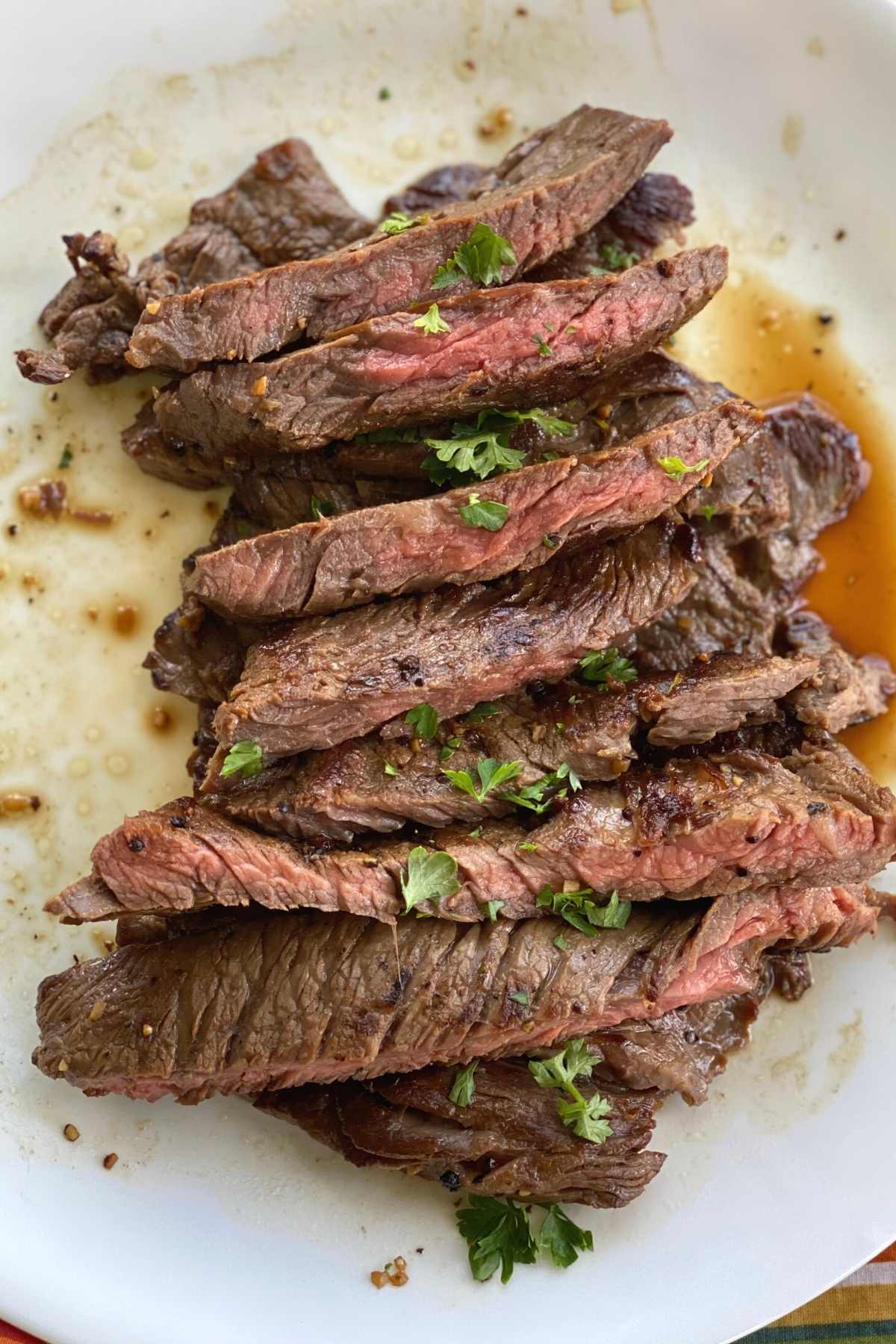
Steak Cooking Times
Like flank steak, it's best to cook bavette steak to medium rare so it does not become tough and chewy. It will continue to cook after being removed from the heat. So, take that into account and remove the steak about 5 degrees before you reach the desired doneness. Use an instant-read meat thermometer to check the temperature.
The USDA recommends that beef be cooked to an internal temperature of 145 °F. Here are the approximate temperatures for other results.
- Rare 125 -130 °F
- Medium Rare 130-135 °F
- Medium 135 - 140 °F
- Medium Well 140 - 150 °F
Tip: Allow the cooked meat to sit for about 5 minutes before slicing so the juices have a chance to redistribute.
What to Serve with Bavette Steak
Here are some easy ideas to round out a dinner featuring bavette steak:
- Crispy Roasted Green Beans - make these in the air fryer or oven.
- Okra Fries - unexpected and delicious.
- Loaded Cauliflower Mash - easy to make with FROZEN cauliflower and low-carb.
- Salad with Sweet Red Wine Vinegar Dressing.
- Corn on the Cob - Microwave it in the husk in minutes!
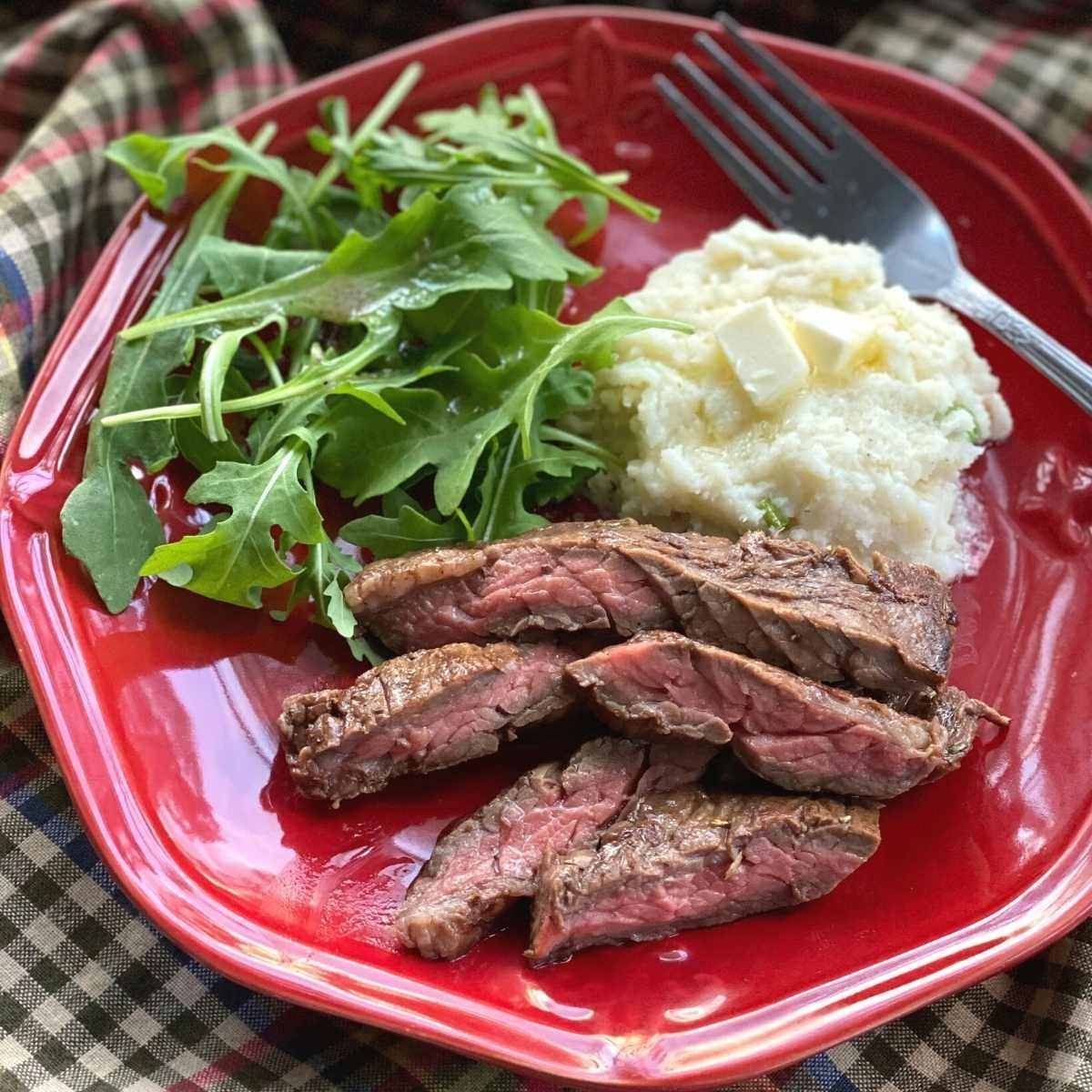
Would you like more easy, healthy, carb-conscious recipes?
📋 Recipe
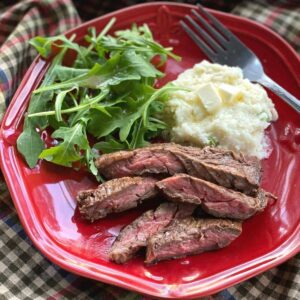
Easy Bavette Steak Recipe (Pan-Sear on Stovetop)
Ingredients
- 1 pound bavette steak (or flap steak) bring to room temperature if possible; flank steak can also be used
With Marinade
- ½ cup olive oil
- ¼ cup low sodium soy sauce
- 2 teaspoons Montreal steak seasoning or favorite dry rub
Without Marinade
- 1 teaspoon salt
- 2 teaspoons olive oil
Instructions
- Remove meat from refrigerator about 20 minutes before cook time to allow it to come to room temperature. This is not required but the meat will cook more quickly and evenly.
- If using marinade, combine marinade ingredients. Add meat and marinade to sealable plastic bag or glass dish and marinate for about 20 minutes. This may be done while bringing the meat to room temperature. When done, remove meat from the marinade, discarding any excess liquid. Place meat on a plate lined with paper towels, pat dry, and brush off any visible seasoning so it does not burn during cooking.
- If marinade was not used, pat meat dry, lightly brush with olive oil, and season with salt.
- Heat a cast iron skillet on high for about 10 minutes. You don't need to add oil or butter. Add meat to the skillet and sear for 2-3 minutes on each side, turning frequently. The exact timing will vary depending upon the thickness of the meat and desired doneness (see chart below.) Meat that is 1 inch thick will take 3-4 minutes on each side. See notes if using a different type of skillet.NOTE: If using a non-stick pan, DO NOT preheat pan on high. Heat the pan over medium-high heat for a few minutes and add meat. The crust will brown but not caramelize to the extent that it would in a cast iron skillet.
- Remove steak from the pan and allow it to rest for about 5 minutes so that the juices redistribute. Cut across the grain and enjoy.
Notes
- Rare 125 -130 °F
- Medium Rare 130-135 °F
- Medium 135 - 140 °F
- Medium Well 140 - 150 °F

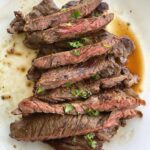
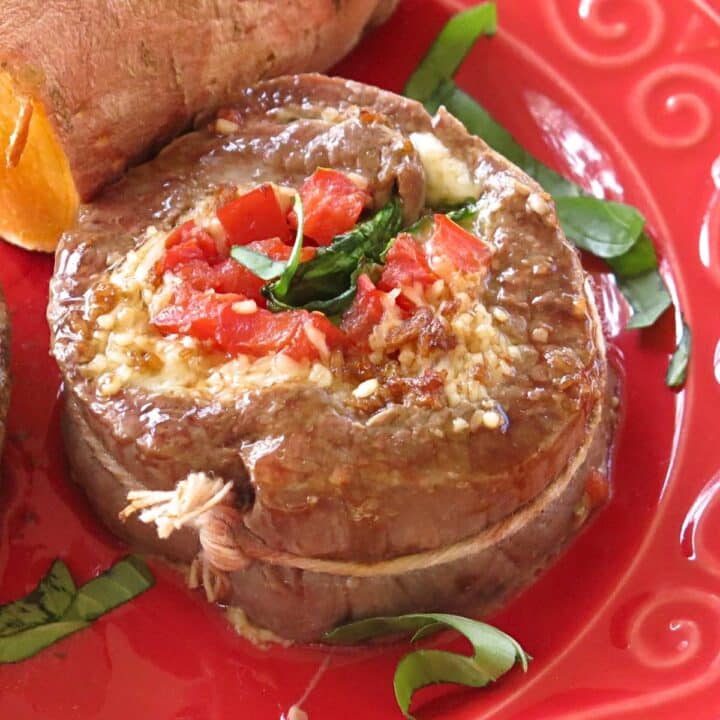
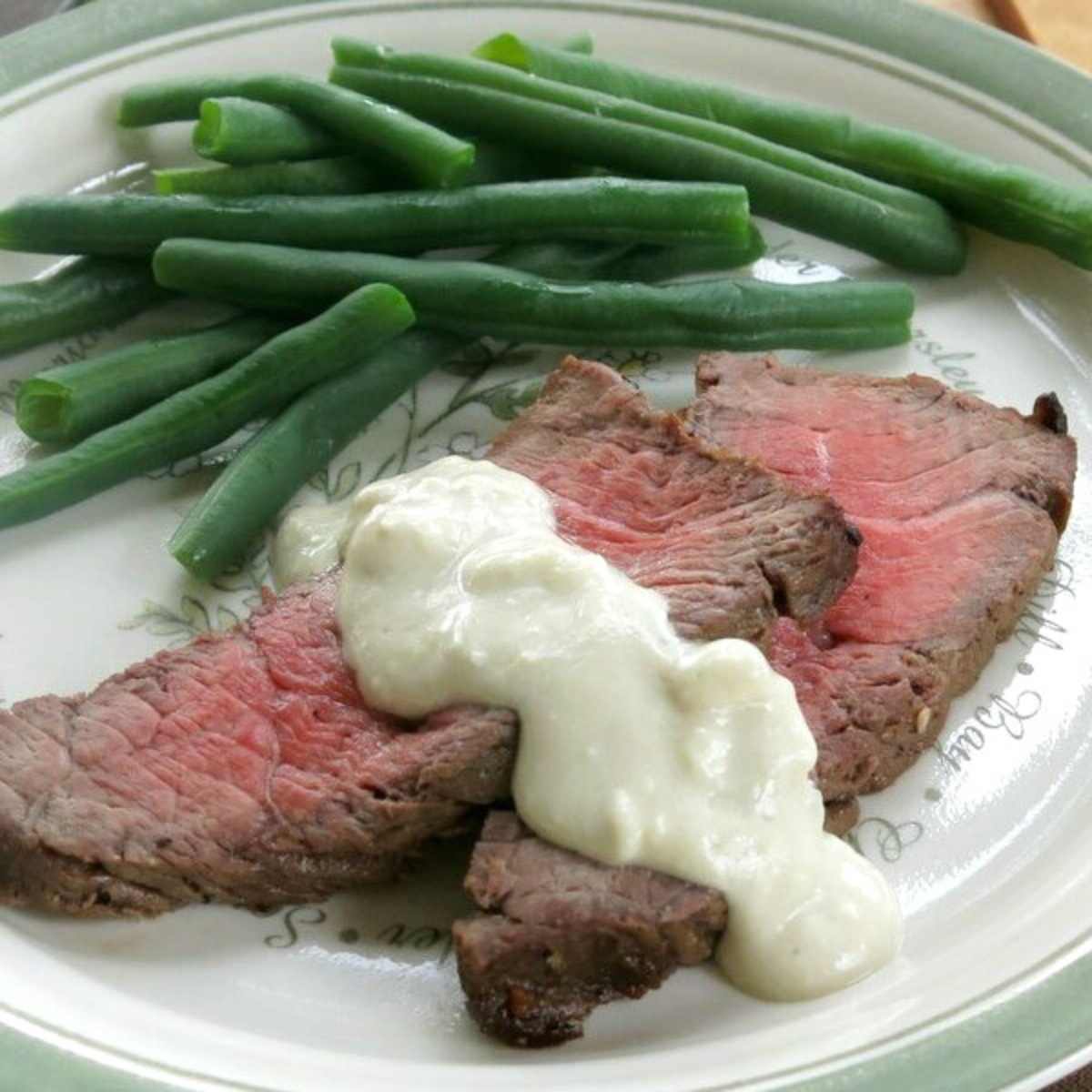


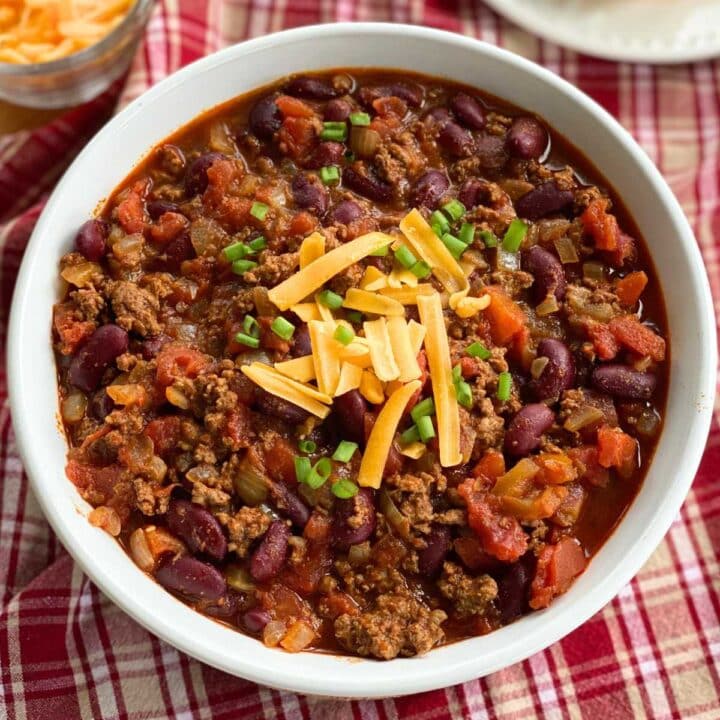
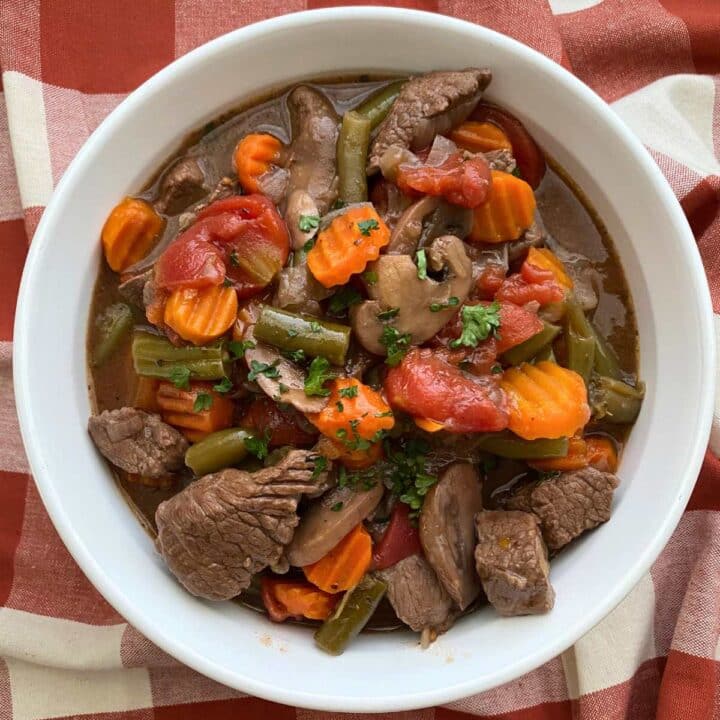
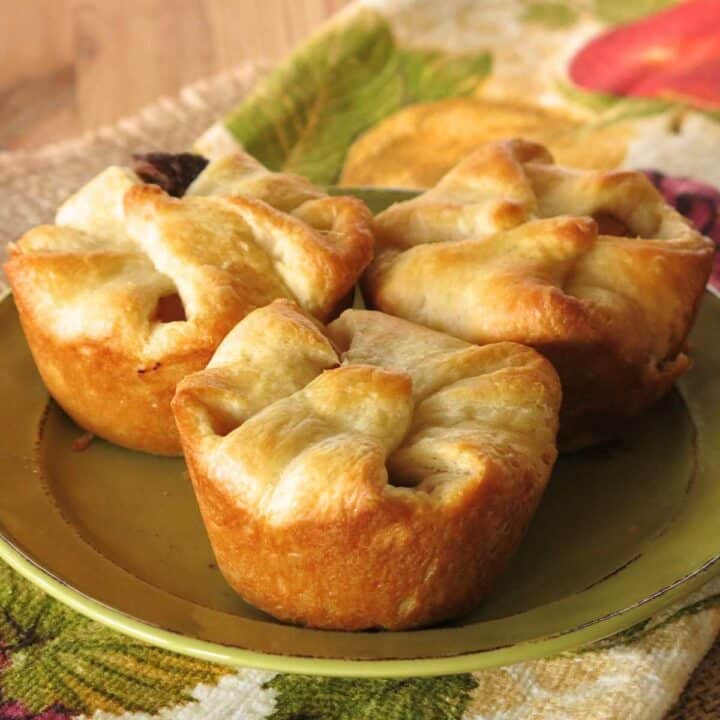
Jessica says
The family loved it! I didn’t have steak seasoning so I used all seasoning. Also, I use liquid aminos instead of soy sauce. Even with these substitutions it came out amazing!
Janny says
I’ve pan seared steak before but not with this flap steak. I would recommend just 2 teaspoons of steak seasoning in the marinade if using soy sauce sauce do it’s not salty. Followed recipe exactly and it was very good.